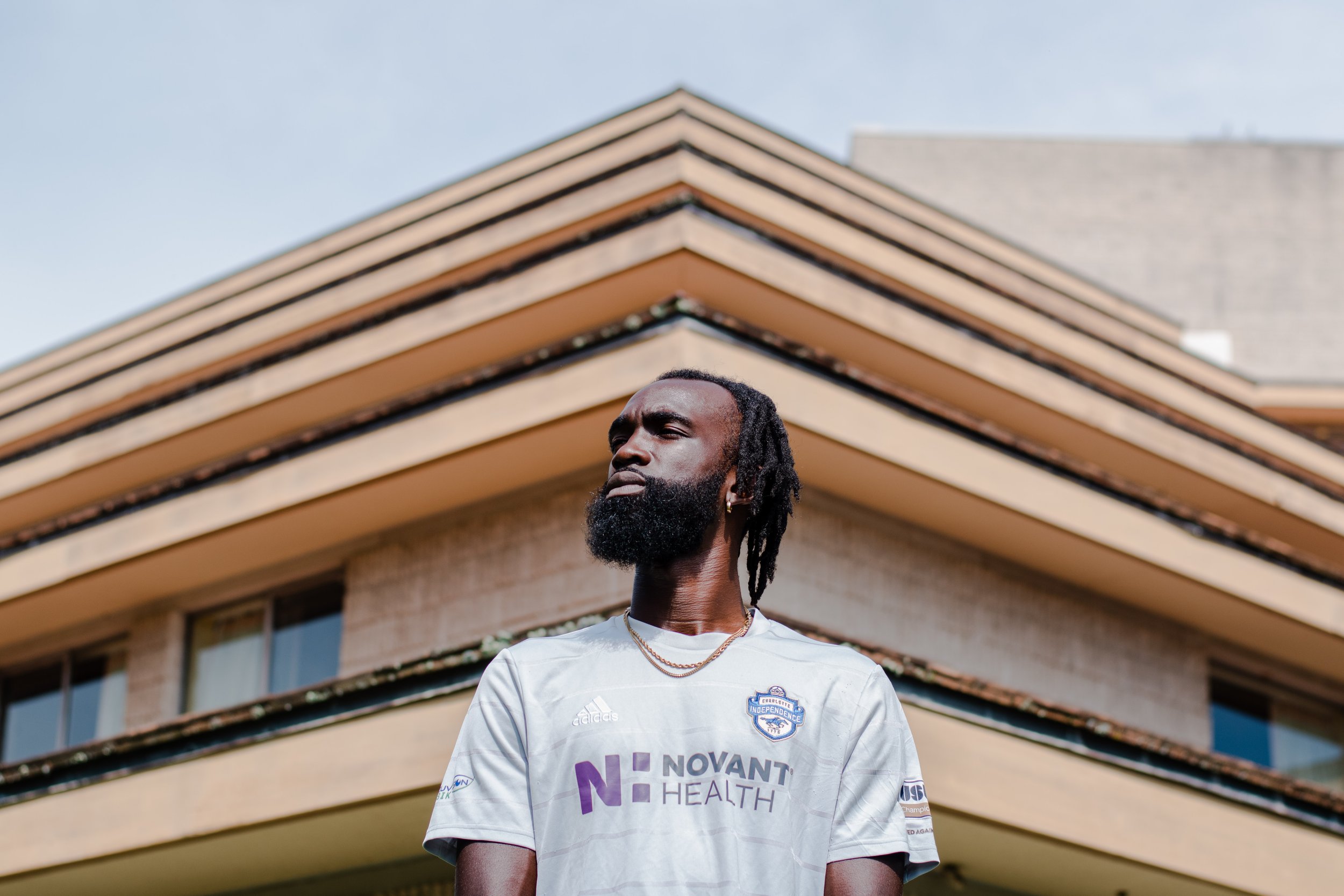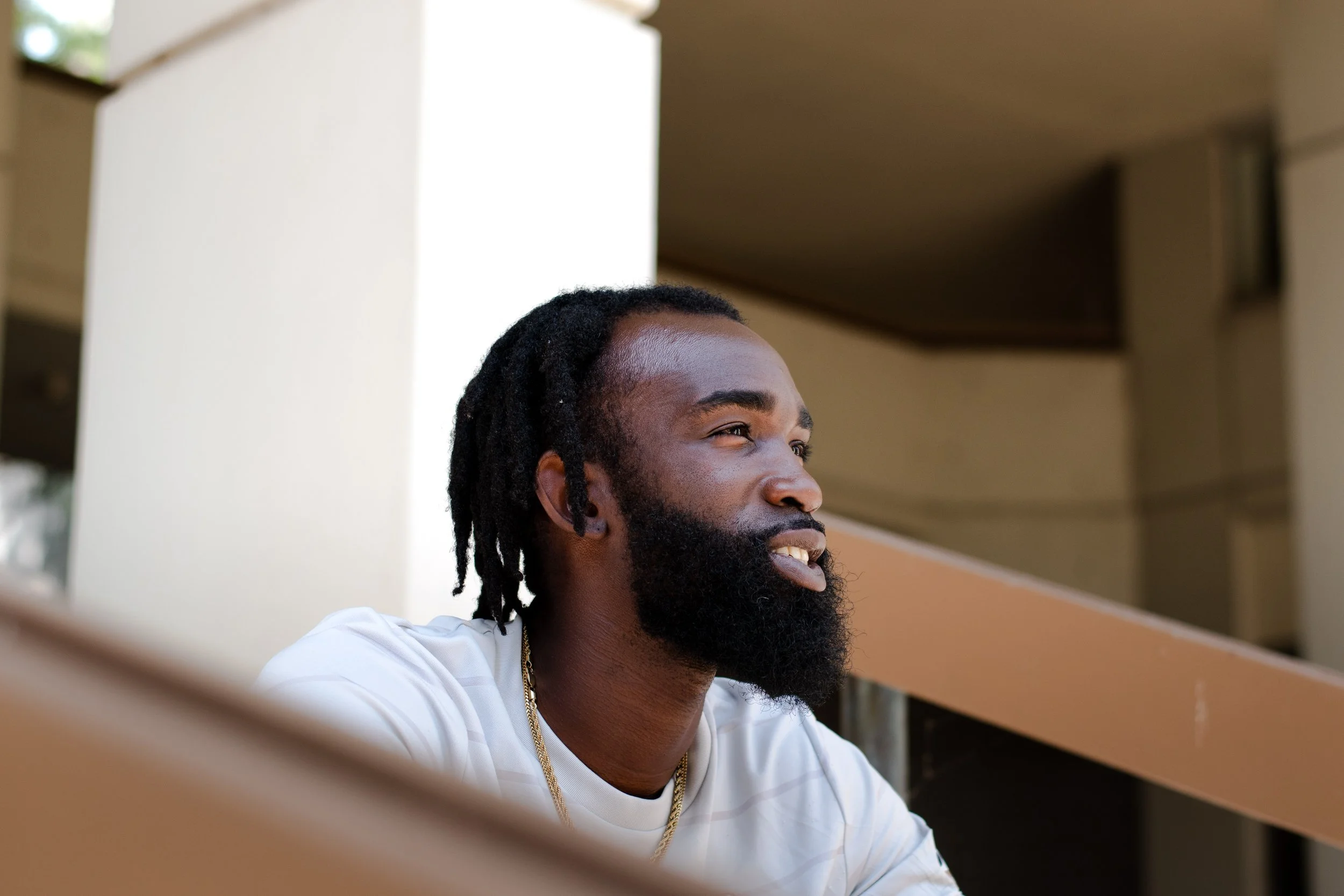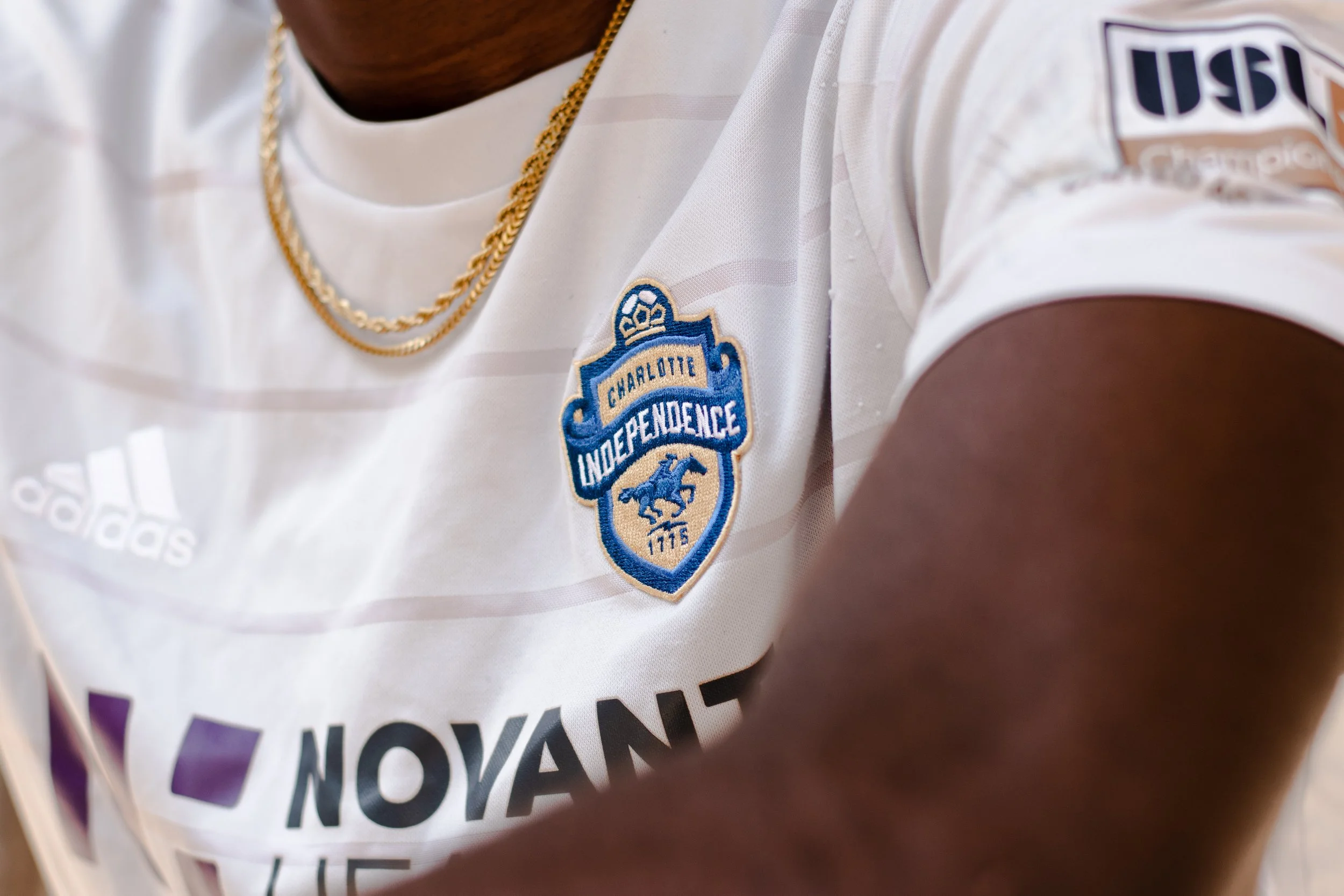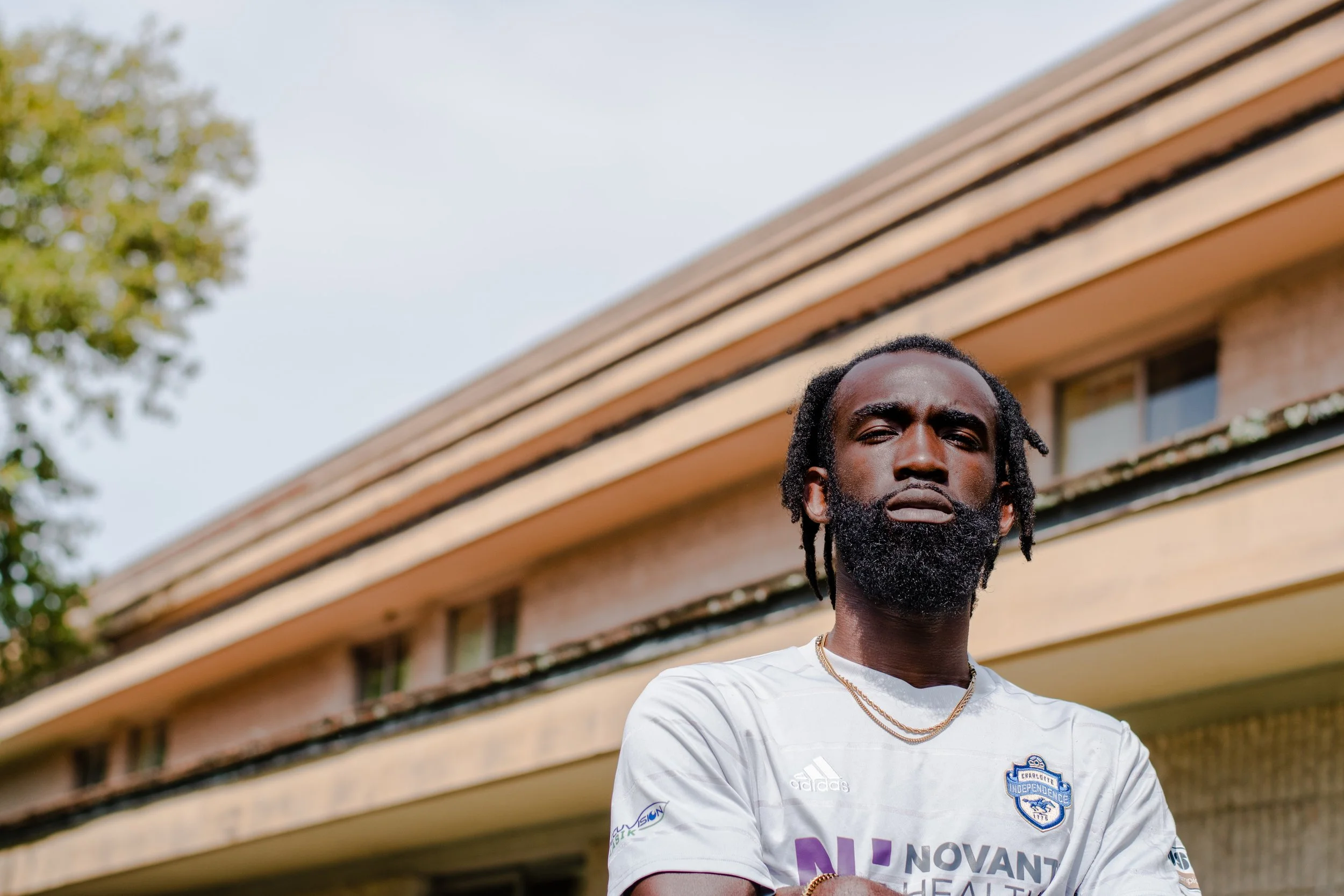Hugh

From playing games in the backyard and being a ball boy for his father’s teams, the beautiful game is something that runs through Hugh Robert’s bloodline.
He began as a young boy playing both recreationally and in MSI classic until moving on to Potomac Academy, formally known as Potomac SC. But soccer wasn’t his only sport — his love triangle also consisted of basketball, where he was able to enjoy the best of both worlds all while having fun with his friends.
“I was playing high school soccer at Good Counsel in Montgomery County, Maryland. I actually went to high school for basketball, not soccer…. So, being a dual-sport athlete, balancing that in addition to managing my time was definitely an experience.”
While Hugh’s father definitely played a part in developing the love for sports, his mother was the one who constantly kept him grounded and reminded him of his priorities.
“She's from Queens, New York. I was born in New York as well. I'm from Queens, so her whole side of the family is up in New York. She's an anesthesiologist at the Washington Hospital Center. She's always been focused on education, so there was a heavy emphasis on education my whole life.”
Even though he was a fast learner on and off the field, Hugh found out that academy and recreational ball were two completely different things.
“You know, the technical side of it. I was playing as a striker at the time. So as a striker, coming to the ball, laying it off, coming to the ball, having possession, holding it, being strong, playing simple, one, two touches…Like, I didn't do any of that stuff in rec. I really just got the ball and just dribbled through everybody and did my thing.”
Hugh’s ability wasn’t in question as he progressed to the next level, but that didn’t mean it was always smooth sailings.
“I was actually nervous before the transition to select [academy] because I was watching TV, and I was like, man, I have to play real soccer, and I'm actually kind of nervous. There were a lot of growing pains for me, especially my junior year of high school when I first made that transition to academy. That technical side, being in position, timing the runs…There are a lot of little things that you learn as well as the increase in speed of play.”
Playing soccer in the pre-internet era of the late nineties provided different challenges than what today’s generation face. Because of his busy schedule, Hugh didn’t have a lot of time to work on football-specific training, which drove him to play more basketball as a teenager.
“I coach and train kids now, but I never was in the backyard playing or doing technical stuff with my dad. Kids now are blessed with social media and have access to all of the drills, but not once was I in the backyard with my dad going through cones, you know. He was very busy with work as well. As an IT guy, he’d be working until like seven, eight o'clock at night. So, a lot of those times, it was really just me going to the backyard with some friends or playing basketball on my own.”
The beautiful game was nowhere near as popular as it is today in the US, and even simple things like finding a field to use on your own for free couldn’t be taken for granted at that time.
“There were hoops everywhere, but for soccer, in the late nineties-early 2000s, there really weren’t any soccer fields at all. I ended up playing a good amount of basketball and wasn't really focused on the technical side of soccer. Since I was playing rec ball, which was kind of easy, I didn’t feel like I had to work on this stuff.”
There was a point in time where Hugh’s love for basketball took him to PG county, hometown of NBA Champion, MVP, and Olympic Gold Medalist Kevin Durant, and a local hotbed for some of the best talent in the country.
“I didn't play ball until late, but from 5th grade until my sophomore year of high school, basketball was my thing. I wasn't even playing in Montgomery County. I would drive to PG county like three to four times a week right after school and go ball with those guys. I was with the neighborhood kids just playing ball because no one there played soccer at all.”
Playing at Good Counsel allowed Hugh to go against some of the top teams in the region, such as Dematha, Gonzaga, and PBI. Competing against loads of future D1 and USMNT players allowed him to be recruited locally and out of state. After traveling to several different camps along the east coast, he landed at George Mason University, where he was able to play at the next level while being close to home and make mom proud by pursuing his degree in Business Administration.
“I went to so many camps my senior year…Providence, Northeastern, Maryland, UMBC, GW, Georgetown, Chapel Hill...I was going all over the East Coast, staying in these dorms from Friday to Sunday. My dad would drop me off to be with these random guys, and I had to ball out in order to get a scholarship.”
The transition he had to make from striker to center back was out of circumstance, but he quickly drew on his basketball experience to make that position his own. By his senior year was named captain and was leader of the back line. Having made it to number 99 of the top 100 on the MLS draft board, Hugh’s road to professional football was full of twists and turns – 99 obstacles, but quitting wasn’t one.
After driving from Florida all the way up to New York for two different three-day combines, some of his fellow athletes decided to step aside and focus on their academics. The group of eight was cut down to two, and Hugh was spending three hours each way driving from Fairfax, VA to Harrisburg, PA, to train with their pro team. After getting cut, he decided to give it one more shot by going to open tryouts with the Richmond Kickers. He impressed in his three-day trial and spent two weeks training with the first team, all while commuting every day from campus at George Mason.
“I trained in Richmond in the mornings. After training, I would drive back up to campus, have my classes from like one to seven, study, and go to bed. Then I’d wake up at 6 in the morning, drive back down to Richmond, train for an hour and a half, then go back to campus to attend classes. I was doing this for two weeks straight. I told them that I needed to know where this was going, and they ended up offering me a contract. The rest was history.”
Hugh’s resilience and spirit were the ingredients behind his story of perseverance, but with every accomplishment comes even greater challenges. Being a college player amongst professionals meant he had to mature quicker than most.
“I couldn't even vent to pros on the team because it’s a grown man's team. Everyone wants your spot, and everyone's fighting to get more money and put food on the table. So, I couldn't even vent to certain guys because I knew they were looking for my spot, and they wouldn't even feel bad for me. I had to deal with a lot of things mentally that I had to internally deal with myself, not to mention how much different the college game is from the pros.”
He spent three years with the Richmond Kickers from 2014 to 2016. Similar to his time at George Mason, he became a regular starter on the backline making 79 total appearances and scoring twice. During the 2016 season, Roberts was named to the USL All-League First Team. He had short stints with the Bethlehem Steel and Pittsburgh Riverhounds before signing with the Charlotte Independence in 2019.
Playing in several different markets allowed Hugh to focus on providing value and making an impact both on and off the field. He saw that there was a lack of organic coverage of the beautiful game in America on a grassroots level and wanted to give the general public behind-the-scenes access to professional soccer in the United States, which was the catalyst behind kickstarting his foundation, BackYardFooty.
“I was seeing these expert analysts on ESPN talk about every sport in the world (including Cornhole) except for soccer. I'm a USL player still, I can’t go over budget, but I wanted to create a cheap, affordable way to talk about the game. That's what the idea of a podcast came to fruition.”
Hugh would link up with players that he knew from different teams when they would come into town, bring them to his apartment to chop it up on his podcast. His YouTube channel started on his couch, and the player-to-player conversations on the game and life outside of sports made for some very personal and relatable content that quickly gained traction.
“When I came here to Charlotte in 2019, I met a videographer out here. I was still doing the podcast, but now I was actually able to give people visuals. Before I was just recording on my phone and stuff, but now a videographer was coming to my practices and games…giving my audience the visual footage really stepped it up for me.”
With the pandemic impacting players of all age groups and levels, Hugh wanted to find a way to help kids that reminded him of his younger self that didn’t have access to proper training. He partnered with his local middle school this past offseason to offer virtual coaching. This allowed Hugh to diversify his audience and reach younger kids that weren’t listening to his podcast. Building FootyAcademy and learning how to utilize TikTok to influence his players, Hugh was able to have 1-on-1 and group sessions via Zoom where they went through drills, critiqued their skills, and watched live games together to help improve their football IQ.
2020 was a whirlwind year for everyone, and with the ever-changing state of the globe, Hugh decided to be opportunistic and use the time away from the field to educate his listeners on tough conversations that were long overdue in the soccer community.
“Instead of doing the same one-on-one conversations, why not use my platform to educate these people. I had two Black Lives Matter episodes where I brought 15 MLS & USL players together on Zoom. We talked about being black while playing soccer in this country and the struggles that come with it. After the second conversation, FC Cincinnati caught wind of my podcast where we spoke about one of their players that was getting hateful and racist DMs in his inbox even after the club put out a statement against racism and discrimination.”
After learning about this incident, FC Cincinnati donated $250,000 to local minority communities, and it was all based on Hugh’s courage to speak the truth and amplify the voices of the unheard, which to this date is his greatest achievement. He’s had similar episodes where ten black & minority coaches came together to speak about their collective experiences. Word traveled fast, and after partnering with a local ESPN radio show in Charlotte, the movement was able to establish a charity foundation and inspired this philanthropic movement that we see today.
Hugh envisions BackYardFooty tapping into different markets in the USL and MLS to highlight gamedays and interview players, but he’s also interested in showcasing domestic soccer off the field in an MTV-Cribs style format. He’s partnered with a local brewery in Charlotte, where he’s conducted live podcast shows with esteemed guests like Premier League Champion Christian Fuchs, as well as former Manchester United player Gabriel Obertan.
With the success of podcast came more opportunities to impact change. Hugh formed the USLBPA and developed an open line of communication with the VP and President of the USL. After the creation of their own United Against Racism campaign, Puma reached out to the player’s association to collaborate on a project that best represented their cause. With ample creative control and support from USMNT & Valencia FC’s Yunus Musah, Hugh and the team were able to drop not one but two limited releases of the United Against Racism jerseys. 100% of the proceeds were donated to the Young Investors Society, a high school financial literacy program dedicated to preparing the next generation of investors.
Hugh still wants to make his ultimate dream of playing in the MLS, in addition to securing some sponsors to help highlight more of the domestic soccer scene and produce the content that is greatly needed.
“As far as the future goes, I would love to be a GM or President & CEO of a football club, maybe even run like my own academy. But whatever I do, I definitely envision growing this game for minorities in this country to get a fair shot at making it.”
If you ask us, Hugh has already shown that he possesses all the leadership qualities needed to excel at the very highest level. Coming to a successful organization near you soon.
Photography by Gabriel Bayona Sapag & Kenny Giarla.









